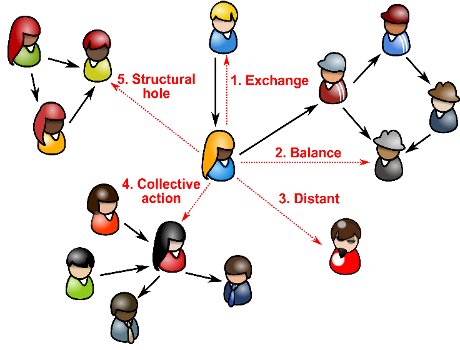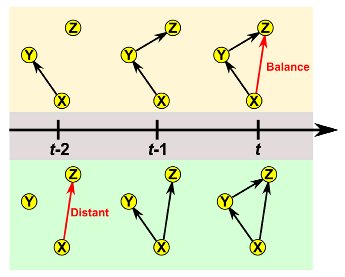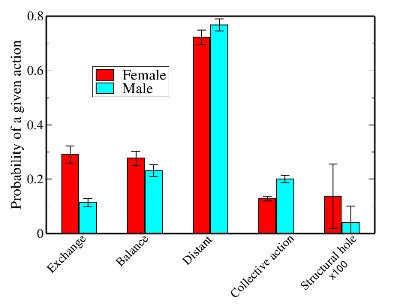Social drivers behind online interactions
How people interact in evolving online networks

Possible social mechanisms used to establish a new connection
Why do we create social networks? This question has long been in the mind of sociologists and communication theorists. A number of theories
have been suggested, which indicate our tendencies to bond, explore, exploit, etc. Is it possible to measure these theories in a real setting?
We analyzed all the connections in two online social networking sites in Sweden. We had the entire history of interactions, so we had full knowledge of the
exact moment when each connection was established. This allowed complete access to the existing network connections at any time, and we
knew how the network looked like from the point of view of the person who established the contact. This information is enough to assign each connection
to a given theory. For example, a connection can point to a friend of a friend, it can be reciprocal, it can point to a hub, it can connect two otherwise
isolated modules, etc. All these actions leave characteristic patterns which we can then quantify.

From the point of view of X, connecting to Z in two different ways results to the same pattern
The key in this analysis is that accurate time evolution is necessary. Simple detection of the characteristic patterns in static snapshots can be misleading on why a link was established. In the picture above, both cases result to the same pattern (a triangle) but we are interested in X's connection to Z. As shown above, depending on when this link was established, X would perceive differently his 'closeness' to Z.

Men and women use certain social mechanisms with different frequency
We have detected many interesting patterns, e.g. women behave differently than men, our connection patterns change with age, involvement, etc. For details, please check here.
In short, we characterized individual actions and quantified the social driver mechanisms that people use to connect with each other. The analysis of real data revealed different trends based on features such as gender, age, involvement, etc.